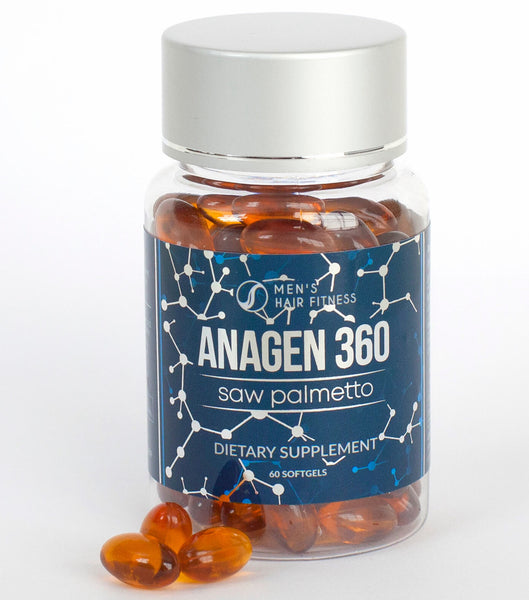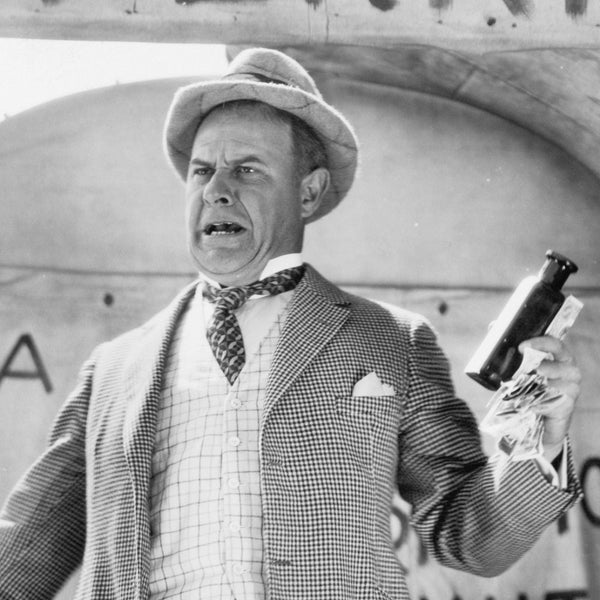Ketoconazole - the shampoo with a difference
It was right there all time
Currently marketed as a pharmacy-only shampoo for the treatment of dandruff and itchy scalp, a growing body of evidence suggests that men have accidentally been treating their hair loss with Ketoconazole for years. Although initially investigated based on its anti-inflammatory properties, more recent research has demonstrated ketoconazole directly acts to block the DHT impacting on your hair follicles. In combination with minoxidil and/or finasteride, ketoconazole deserves to be included in your hair fitness regime.
Clinical evidence
In 1998 a group of Dutch researchers started a study1 to investigate the role of inflammation caused by microfauna (a much nicer word used to describe the fungi on your scalp). The group looked at the effect of a shampoo containing 2% ketoconazole. The first part of the study divided the 39 men into three groups: Those suffering no hair-loss - who were treated with ketoconazole, those suffering from hair loss - treated with an over the counter shampoo not containing ketoconazole and, finally, a group suffering hair loss - treated with 2% ketoconazole. The results were incredibly illuminating; the group with hair-loss who were treated with ketoconazole showed improved hair volume of up to 10% over the first 15 months of the study. The group suffering from hair loss and treated with a placebo experienced a continued decline in hair volume. They then continued the study with a small group of 4 men to explore the impact of combining 2% minoxidil treatment with ketoconazole. Although the sample was too small to draw concrete conclusions from, the initial results showed and 18% improvement for the combination therapy vs an 11% improvement for minoxidil alone over starting thickness and density.
This initial study fathered a slew of global follow-up work by researchers. A larger 2002 study of 100 men which compared different treatment regimes demonstrated finasteride2 combined with ketoconazole outperformed minoxidil3 and finasteride on their own (unfortunately they did not test minoxidil combined with finasteride). In 2004 a study4 in mice showed that ketoconazole stimulated hair growth in highly controlled conditions when compared to a placebo. Further studies in 20045, 20056 and 20077 have helped to build the case that ketoconazole has a significant effect in stimulating both the number of active follicles and the average diameter of the hairs in men suffering from pattern hair-loss.
Debate over its method of action
It was initially hypothesised that ketoconazole protected patients from hair loss by reducing the inflammation caused by microfauna on the scalp. However, in 2004 a paper8 indicated that ketoconazole amplified the DHT9 inhibiting effects of finasteride. This is interesting as it was demonstrated as far back as 198610 that orally administered ketoconazole suppressed the production of testosterone, and a more recent study in 201411 of its action in cancer patients clearly shows it has anti-androgenic properties.
The evidence all suggests that benefits of ketoconazole shampoo go beyond simply reducing inflammation, showing that it directly acts to block the hormonal heritage of hair loss.
Adding ketoconazole to your hair fitness routine
2% ketoconazole shampoo is available as a pharmacy-only medicine under various brand names. Your experience with using it will differ based on the sensitivity of your scalp. A small number of people find that it makes their scalp dry with intensive use. We suggest starting off by including it twice a week as a normal part of your showering routine. In a very small number of cases, it can cause redness and headaches, in which case you should stop using it immediately.
We have created an easy to use subscription service which will deliver a 100ml bottle of market leading Sebizole and a 2% ketoconazole shampoo direct to your door every 2 months, allowing you to easily incorporate this exciting new treatment into your hair fitness routine.
A powerful new part of your routine
Ketoconazole is yet another example of a simple, clinically proven, safe and effective treatment for men’s hair loss that the snake oil merchants just don’t want to talk about. The clinical studies clearly show that it encourages hair growth and holds off the gradual decline in density and hair thickness that defines male hereditary hair-loss. Although not as effective on its own as minoxidil and finasteride, ketoconazole can be used in combination with those treatments to produce a significantly better result. At Hair Fitness we have created a great new subscription service to help you build a healthy routine and stop the loss!
- Piérard-Franchimont C1, De Doncker P, Cauwenbergh G, Piérard GE.: Ketoconazole Shampoo: Effect of Long-Term Use in Androgenic Alopecia; Dermatology. 1998;196(4):474-7.
- If you would like to learn more about the interesting history and benefits of finasteride then please see our blog post.
- Minoxidil is the oldest and one of the most effective medical treatments for hair-loss to learn more about it see our blog post.
- Ju Jiang, Ryoji Tsuboi, Yuko Kojima,Hideoki Ogawa, “Topical Application of Ketoconazole Stimulates Hair Growth in C3H/HeN Mice” The Journal of Dermatology Volume 32, Issue 4 April 2005 Pages 243–247.
- B. S. Hugo Perez, “Ketocazole as an adjunct to finasteride in the treatment of androgenetic alopecia in men,” Medical Hypotheses, vol. 62, no. 1, pp. 112–115, 2004.
- J. Jiang, R. Tsuboi, Y. Kojima, and H. Ogawa, “Topical application of ketoconazole stimulates hair growth in C3H/HeN mice,” Journal of Dermatology, vol. 32, no. 4, pp. 243–247, 2005.
- S. Inui and S. Itami, “Reversal of androgenetic alopecia by topical ketoconzole: relevance of anti-androgenic activity,” Journal of Dermatological Science, vol. 45, no. 1, pp. 66–68, 2007.
- B.S Hugo Perez, “Ketocazole as an adjunct to finasteride in the treatment of androgenetic alopecia in men” Medical Hypotheses, volume 62, Issue 1, January 2004, Pages 112-115.
- The male hormone DHT is the prime culprit for male hereditary hair-loss. If you would like to learn more about it and it’s role in hair-loss please see our blog post on it.
- Hugh F. English, Steven J. Santner, Hillel B. Levine and Richard J. Santen, “Inhibition of Testosterone Production with Ketoconazole Alone and in Combination with a Gonadotropin Releasing Hormone Analogue in the Rat”, Cancer Research 46, 38-42, January 1986.
- Won Kim, Li Zhang, John H. Wilton, Gerald Fetterly, James L. Mohler, Vivian Weinberg, Allison Morse, Russell Z. Szmulewitz, Terence W. Friedlander, Lawrence Fong, Amy M. Lin, Andrea L. Harzstark, Arturo Molina, Eric J. Small and Charles J. Ryan, “Sequential Use of the Androgen Synthesis Inhibitors Ketoconazole and Abiraterone Acetate in Castration-Resistant Prostate Cancer and the Predictive Value of Circulating Androgens”, Clinical cancer research December 2014 Volume 20, Issue 24
Also in Research & News

Saw Palmetto - a natural way to reduce DHT
An alternative for Men who want to explore a more natural way of blocking DHT is Saw Palmetto. Widely used in the treatment of enlarged prostates, a condition closely hormonally linked to hair loss, there is good scientific evidence that it significantly reduces free DHT and thus protects your hair.
Learn how Saw Palmetto acts to reduce thinning by disrupting the production of DHT. This can have a powerful impact on its own or it can be used to enhance the effect of other treatments as part of a combined program.

What to expect from minoxidil treatment
In the short-term Minoxidil will halt further loss in 95% of men after 3 months of a twice-daily routine. Over a few months, 60% of men will report significant regrowth, especially for those that act quickly to stop the loss. After a year of continuous use, you should expect the initial gains to stabilize as you hair bounces back and you get the thinning under control.The key to using minoxidil is to get into and stick with a healthy routine to get on top of your hair and maintain your gains.

How to sell snake oil
The value of the global hair-loss treatment market is a $2.7bn USD in 2017, which is not surprising when you consider how widespread male pattern hair loss is. Unfortunately, a market that largely attracts not only serious research and clinically proven products, but also a host of more dubious “treatments” and, in some cases, completely unscrupulous “cures”. These can range from the seemingly well-intended but ineffective treatments to outright frauds.
